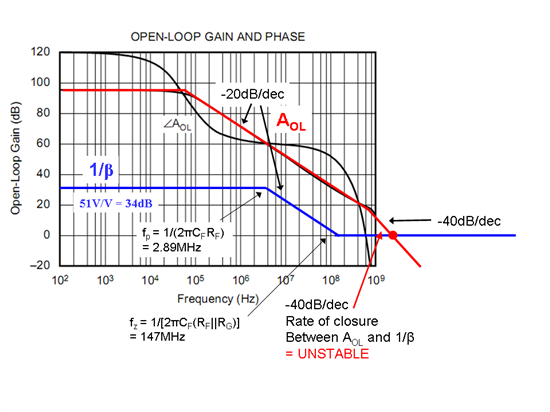Hi,
I am a graduate student at the Indian Institute of Science. I am designing an amplifier using OPA847 for a gain of 1000 and noise <= 3 nV/sqrt(Hz). My final operating frequency is 1.5 MHz. I tried the demo board for SOT 23-6 packages.
I use a non inverting configuration with gain=51 (1+2500/50). There is a capacitor 0f 22 pF acroos the feedback resistor 2.5 KOhm. I am using two capacitor for power supply bypass (4.7 uF tantalum, 100 nF ceramic).
The circuit oscillate around 25 MHz. Please help me sort out the problem.


